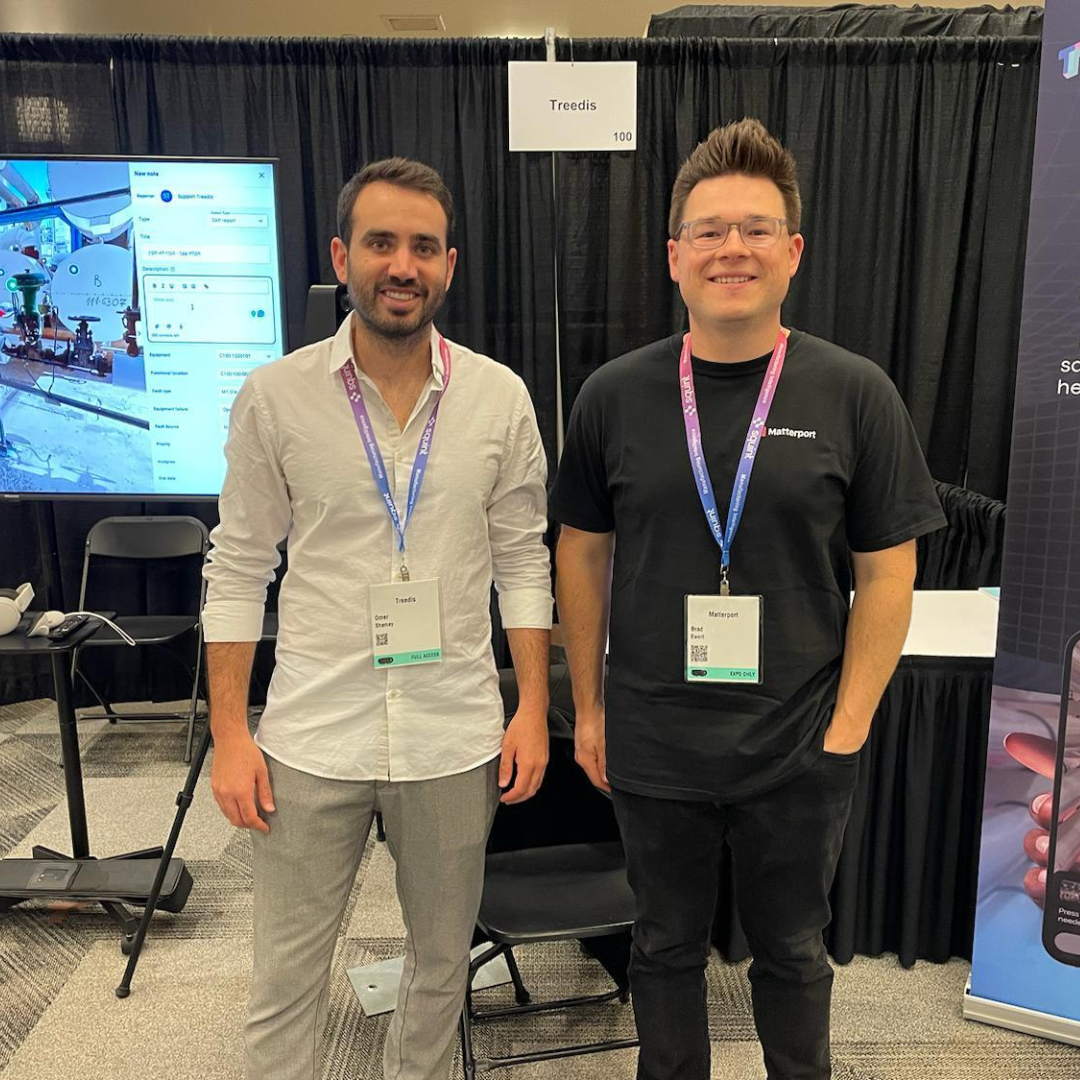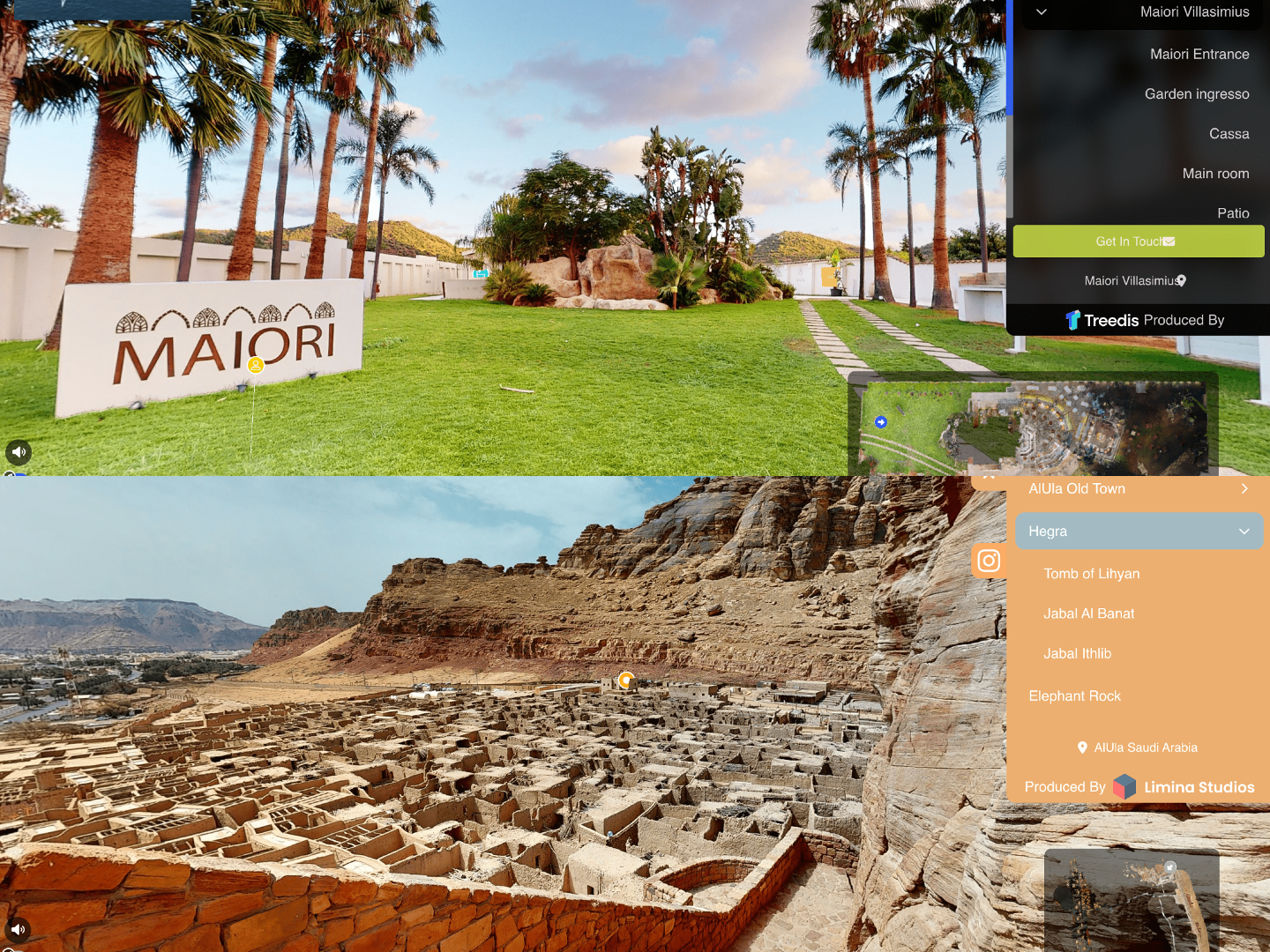May 30, 2025
Blog
Future Digital Twin Conference in Amsterdam 2023


Navigating Tomorrow’s Oil and Gas Landscape: Takeaways from the Future Digital Twin Conference
Ever wondered about the game-changing potential of digital twin technology in Industry 4.0? If so, the recent Future Digital Twin conference was the place to be. It was also where you could witness the game-changing partnership of Treedis and Amazon Web Services (AWS), whose strategic alliance, forged earlier this year, is revolutionizing the impact of digital twins on Standard Operating Procedures (SOPs) and their significance for the oil and gas sector, both through customized end to end projects and marketplace offerings.
Step Inside the Virtual Tour: A Walkthrough of the Conference Space Captured by Treedis.
The conference delved into the essential steps required for integrating digital twins effectively within the energy and oil and gas industry, while also emphasizing the importance of maintaining best practices throughout the entire product lifecycle. But fear not if you were unable to attend; we’ve got you covered. Here’s a glimpse of the top takeaways and the conversations that unfolded.

A Glimpse into the Conference
The conference was organized in collaboration with Shell on October 17th at the Energy Transition Campus in Amsterdam, with AWS as a key sponsor. It served as a meeting point for industry experts, innovators, and thought leaders.
Treedis and AWS carved out a dedicated room where attendees could step in and fire away their questions to discover the untapped potential of digital twins.Guiding these conversations were Boaz Goldschmidt, the VP of Business Development at Treedis, and a duo from AWS: Ashish Naik, the Sr. Specialist in Autonomous Compute, and Chris Wood, the Senior IoT Partner Solutions Architect.Questions revolved around leveraging real-time data, along with Augmented Reality (AR), and Virtual Reality (VR) to supercharge productivity and streamline how industrial teams work together to create a truly well-oiled and connected workforce using digital twins.
“Digital twins bring together sensors, IoT connectivity, modelling and at-scale compute to enable new capabilities for our customers. We wanted to be able to share the work our partners, such as Treedis in Connected Workers, can unlock for them and understand the trends of where the future of digital twins are heading,” said Ashish.
Boaz and Ashish also gave a collaborative presentation that brought unique insights to the forefront, and we’ve boiled it down to the top 5 lessons we took away from it.

1. Digital Twins Must Drive Business Value
Ashish emphasized that the success of digital twin projects hinge on much more than the mere replication of physical assets. Drawing from discussions with over 200 customers in the space, he underscored that
“Digital twins are digital representations of a physical system, and the system has to be dynamic, and always updating its structure, state, and behavior - and most importantly, it has to drive business outcomes”.
Ultimately, to ensure a successful digital twin project, it must constantly evolve and deliver genuine value.

2. Data Integration is Crucial
In our data-driven world, the crux of delivering genuine value resides in the seamless integration of data from various sources, both within and outside organizations. This integration is the linchpin for creating a comprehensive view of assets and processes within the digital twin, paving the way for well-informed decisions and streamlined operations that lead to significant cost savings.The partnership between Treedis and AWS is a living testament to the significance of data integration. It has led to the incorporation of the AWS IoT TwinMaker into Treedis digital twin systems, facilitating real-time data collection and connectivity.

3. Connect Workers
This partnership also sets the stage for connected workers to harness AR and VR technologies. Boaz honed in on this during his presentation. He discussed the real-world challenges faced by manufacturing and utility companies, which lose approximately one trillion dollars annually due to unplanned downtime. He emphasized the need to reduce such downtime and the shortcomings of existing solutions- costly, difficult to scale, and requiring specific skills.
Treedis simplifies this by starting with 3D scanning to create digital models. These models are then uploaded to the platform, where workflows and SOPs are digitized using a no-code studio. These digitized workflows are accessible both remotely and on-site.
“The real magic happens in the physical realm,” Boaz emphasized. Workers can use AR applications to access data and information in the palm of their hand, synchronized and calibrated to their precise location on-site.“This brings us to connected workers,” said Boaz.We see how the employees on-site and remotely connect with control centres that helps reduce downtime”.
He referenced statistics collected from Treedis's recent AR project with the Port of Ashdod in Israel. This project achieved a remarkable 50% reduction in repair times for experienced electricians and an impressive 84% reduction for novice electricians, resulting in substantial cost savings.

4. Partnerships are Key
Collaborating with industry leaders is equally as important as connecting workers. They can open doors to innovative solutions, resources, and expertise that drive the adoption of digital twins.As such, Boaz characterized the foundation of the partnership between Treedis and AWS as a “win-win”.
“Treedis adds value in innovative end user products, and AWS offers a wide network and technical foundation that brings big opportunities, especially within the oil and gas sector,” explained Boaz.
When asked why strong partnerships are vital for success in the digital twin space, Boaz stressed the importance of an end to end solution for clients.
“Partnering with a client facing organization like AWS enables us to become part of that end to end solution”.
5. Embrace Industry Trends
The proliferation of sensors, network connectivity options, diverse visualization techniques, and a variety of screen devices has propelled digital twins to the forefront of innovation. Ashish highlighted how this proliferation equips digital twins with unprecedented access to real-time data, enabling more precise monitoring, predictive maintenance, and enhanced decision-making than ever before.
As companies increasingly adopt digital twins, they position themselves to capitalize on emerging trends and stay ahead of the curve in the realm of innovation.For industries like the oil and gas sector, this technology is becoming increasingly relevant.
“During the Covid-19 pandemic, demand for oil and gas was low. The war in Ukraine has also added to the precarity in the sector, as vital supplies have been cut off. This has brought a demand to cut costs using digital twins,” explained Boaz.
Digital twins then emerge as a powerful tool to address the challenges in energy production. They assist providers in making their asset management more efficient, improving performance, and cutting down on operating expenses and unexpected downtime.

Facing the Future
The Future Digital Twin conference has provided a pivotal glimpse into the world of digital twins and their transformative potential in the oil and gas industry.The insights, partnerships, and lessons learned at this event have laid down a clear roadmap for organizations to navigate this exciting digital landscape and harness the boundless possibilities that digital twins offer for shaping the future of their industry.
More Articles
More Articles



May 30, 2025
Future-Proofing Operations with Flows
Want your team to train better? We have your solution. This blog breaks down our standout feature, Flows, showing it's potential for your organisation.
.png)

Jan 14, 2025
How Immersive Technologies Are Revolutionizing Workforce Training and Closing the Skills Gap
Immersive technologies like AR, VR, and digital twins are revolutionizing workforce training by addressing the growing skills gap with engaging, hands-on learning experiences. These solutions enhance retention, boost productivity, and reduce costs, making them essential for dynamic, scalable training in a rapidly evolving job market.


Nov 27, 2024
What's Next For Training? Takeaways From The Augmented Enterprise Summit
In October, we joined the Augmented Enterprise Summit (AES) with Matterport, connecting with industry leaders and Fortune 500 companies while sharing key XR insights.


Jun 28, 2024
Digital Twin Awards: Success Stories
The Digital Twin Awards honor virtual tour innovation. This year, Treedis users Farhad Berahman from Limina Studios and Francesco Loddo from SardiniaVirtualTours3D won in historical and hospitality categories. Farhad's tour of AlUla captivated 2 million viewers, while Francesco's tour of Maiori Villasimius boosted bookings by 25%. Their achievements showcase the transformative power of Treedis technology.
%20(1).jpg)

Jun 5, 2024
Key Insights from Hannover Messe: The Future of Manufacturing in Industry 4.0
At the 2024 Hannover Messe, Treedis showcased its Connected Workers solution with AWS, Vodafone Business, and Matterport, integrating digital twins and live sensor data to enhance manufacturing efficiency. This collaboration highlighted the importance of strategic partnerships in advancing Industry 4.0. Treedis remains committed to providing scalable, innovative solutions for the evolving manufacturing landscape.


.jpg)
.png)











